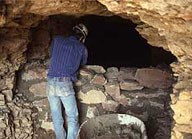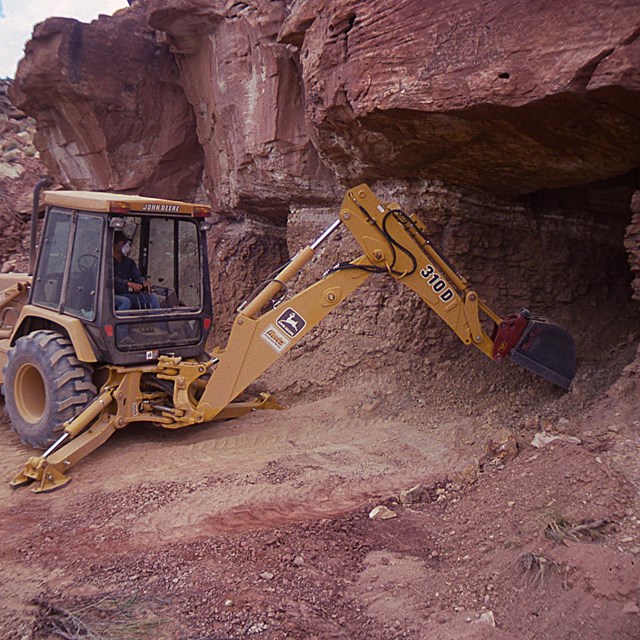
NPS photo.

NPS photo
Introduction
The mitigation and reduction of hazards from abandoned mineral lands are often complicated and expensive procedures. The National Park Service establishes the priority for mitigation by considering the level of danger and degree of resource damage. Each site is unique. The chosen method for mitigating features at an abandoned mine site or feature depends on numerous variables such as available materials at the site, the type of rock, the difficulty of reaching the site, and mitigation costs. Parks use a variety of methods to mitigate the hazards and resource issues at these sites. Because of limited funding, parks can usually afford only temporary solutions such as fencing and posting signs, until funding for more long-term solutions becomes available. Common long-term mine closure techniques include backfilling, blasting, expandable polyurethane foam ("PUF"), rock and mortar walls, steel grates, bat gates, and bat cupolas. For more information, see our AML Closures page. For information about mines where bats may be present, see the discussion on White Nose Syndrome on our Mines as Habitat page.
During mitigation of abandoned oil and gas sites, well bores are properly plugged and capped. Cementing the wellbore with concrete at the production zone and the groundwater zone prevents contamination of water supplies.
Related Links
-
 Mine Closures
Mine ClosuresClosing mines to keep people safe
-
 Wildlife Habitat
Wildlife HabitatMaintenance of critical wildlife habitat for species of concern
Last updated: October 28, 2022
